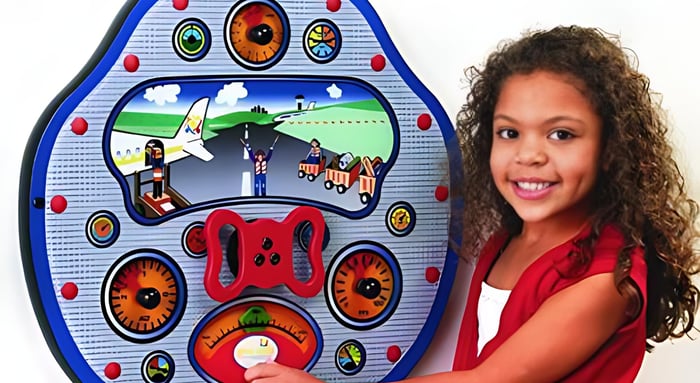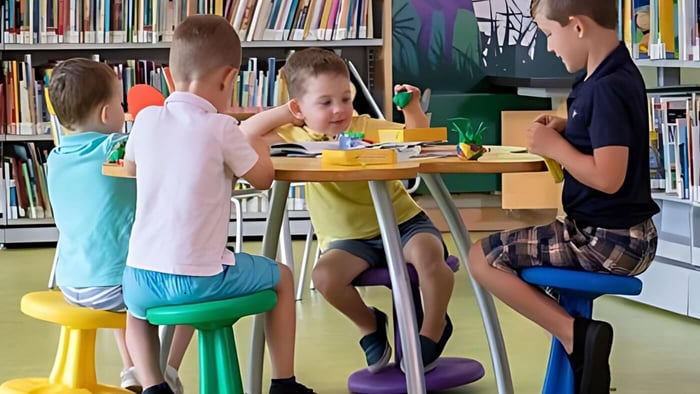
Reducing Pediatric Surgery Anxiety: Calming Activities
Table of Contents
- When your child faces surgery, their anxiety can actually interfere with anesthesia and slow healing. But research reveals four specific techniques that dramatically reduce surgical stress—and one involves something as simple as a teddy bear that could transform your child's entire experience.
- Key Takeaways
- Why Surgical Anxiety Hits So Hard For A Child (And How You Can Help)
- Evidence-Based Calming Techniques That Actually Work
- Hospital Programs That Reduce Pre-Surgery Stress
- Age-Specific Preparation Strategies
- Questions to Ask Your Child's Medical Team
- Addressing Common Fears: Masks, Needles, and Anesthesia
- These Preparation Strategies Lead to Smoother Recoveries and Less Trauma
- FAQs
When your child faces surgery, their anxiety can actually interfere with anesthesia and slow healing. But research reveals four specific techniques that dramatically reduce surgical stress—and one involves something as simple as a teddy bear that could transform your child's entire experience.
Key Takeaways
- Evidence-based calming activities like therapeutic play, sensory distraction, and guided imagery can significantly reduce children's surgical anxiety and improve cooperation during procedures
- Age-specific preparation strategies are crucial - toddlers need 1-2 days notice while school-age children benefit from advance preparation time
- Hospital programs including Child Life Specialist sessions and pre-operative tours help familiarize children with the surgical environment before the big day
- Common fears about masks, needles, and anesthesia can be addressed through gradual exposure, role-play activities, and child-friendly explanations
- Proper preparation leads to measurably better outcomes including reduced medication needs, smoother recoveries, and less post-surgical trauma
When a child faces surgery, anxiety becomes as real as any physical symptom. The good news? Research consistently shows that parents equipped with the right preparation strategies can dramatically reduce their child's stress, leading to better cooperation with medical teams and faster healing. Understanding which calming techniques work best for different ages transforms a potentially traumatic experience into a manageable challenge.
Why Surgical Anxiety Hits So Hard For A Child (And How You Can Help)
Children experience surgical anxiety differently than adults because their developing brains process fear through a lens of limited understanding and vivid imagination. A simple medical mask can become a monster, while the unfamiliar hospital environment triggers deep-seated fears about separation from parents and loss of control.
The physiological response is intense - elevated heart rate, shallow breathing, and stress hormone spikes that can actually interfere with anesthesia effectiveness and post-operative healing. Little People's Cove recognizes that addressing these fears requires more than reassurance; it demands evidence-based strategies that speak directly to how children's minds work.
Most importantly, children mirror their parents' emotional state with remarkable accuracy. When caregivers model calm confidence while acknowledging legitimate concerns, children develop trust in both their support system and the medical team. This emotional foundation becomes the springboard for specific coping techniques that transform anxiety into manageable nervousness.
Evidence-Based Calming Techniques That Actually Work
Pediatric hospitals have identified four core approaches that consistently reduce measurable surgery anxiety in children. These techniques work because they engage multiple senses while giving children active tools to manage their emotional responses.
1. Therapeutic Play: Making Medical Procedures Less Scary
Therapeutic play transforms abstract medical concepts into concrete, manageable experiences. Children use dolls, stuffed animals, or medical toy kits to act out procedures, giving them a sense of control and understanding. Medical research demonstrates significant decreases in pre-operative surgery anxiety when children practice placing masks on teddy bears or giving "shots" to dolls.
The key lies in letting children lead the play while parents provide gentle guidance. A child might decide their stuffed elephant needs "brave medicine" before surgery, naturally processing their own need for courage. This approach works particularly well for preschoolers and early elementary children who learn best through hands-on activities.
2. Sensory Distraction Activities for Anxious Moments
Sensory distraction redirects the brain's focus from stress triggers to engaging, pleasant stimuli. Effective techniques include bubble blowing, fidget toys, coloring books, interactive games, or listening to favorite music. The goal is occupying enough mental bandwidth that surgery anxiety thoughts have less space to grow.
Different children respond to different sensory inputs. Some find tactile stimulation through stress balls or textured toys most helpful, while others prefer visual distractions like kaleidoscopes or audio comfort through familiar songs. Smart preparation involves packing a variety of sensory tools and letting the child choose what feels most comforting in the moment.
3. Movement and Breathing Exercises
Gentle movement and focused breathing directly counteract the physical symptoms of surgery anxiety. Simple exercises like toe wiggling, shoulder rolls, or "balloon breathing" (imagining inflating a balloon in the belly) activate the body's natural relaxation response. These techniques work because they give children concrete actions to take when feeling overwhelmed.
The balloon breathing technique works well because it's visual, simple to remember, and can be used anywhere. Children breathe in slowly through the nose, imagining filling a balloon in their stomach, then exhale through the mouth, deflating the balloon. Three to five repetitions often produce noticeable calming effects.
4. Guided Imagery for Deep Relaxation
Guided imagery helps children mentally transport to safe, happy places during stressful moments. The technique involves describing a peaceful scene in rich sensory detail - perhaps a favorite beach, playground, or even an imaginary magical kingdom. What makes this powerful is engaging all five senses in the visualization.
Parents can practice this at home by having children describe their "happy place" in detail, then guiding them through the imagery when surgery anxiety peaks. The beach might include warm sand between toes, the sound of gentle waves, the smell of salt air, and the sight of colorful seashells. This multisensory approach creates a mental refuge children can access independently.
Hospital Programs That Reduce Pre-Surgery Stress
Many hospitals now offer specialized programs designed to familiarize children with the surgical environment before the actual procedure day. These initiatives recognize that fear of the unknown often surpasses fear of the procedure itself.
Child Life Specialist Sessions
Child Life Specialists are trained professionals who use play, education, and developmental expertise to help children understand medical procedures. They provide age-appropriate explanations, demonstrate equipment, and teach coping strategies tailored to each child's personality and developmental stage.
These sessions often include mock procedures where children can touch and examine medical equipment in a non-threatening environment. A Child Life Specialist might show how the anesthesia mask works by having the child try it on a doll first, then gradually working up to brief trials on themselves. This gradual exposure reduces the shock and fear associated with unfamiliar medical devices.
Pre-Operative Tours and Role-Play Programs
Hospital tours allow children to see operating rooms, recovery areas, and meet staff members before surgery day. Many facilities offer virtual tours or video walkthroughs that families can review multiple times at home. Some programs include role-play opportunities where children can "operate" on stuffed animals or even become the "doctor" for a day.
These programs work because they transform the hospital from a scary, unknown place into a familiar environment with friendly faces. Children who participate in pre-operative tours often show lower surgery anxiety levels and better cooperation with medical procedures compared to those who arrive on surgery day without preparation.
Age-Specific Preparation Strategies
Different developmental stages require distinctly different approaches to surgical preparation. What calms a toddler might overwhelm a preschooler, while strategies for school-age children often fall short with teenagers.
1. Infants and Toddlers (0-4 years): Managing Separation Anxiety with Comfort and Routine
Very young children process surgical preparation differently because they don't yet understand time concepts or abstract medical explanations. For infants, focus centers on maintaining familiar routines and ensuring caregiver presence whenever possible. Familiar blankets, pacifiers, or soft toys provide sensory comfort during stressful moments.
Toddlers benefit from simple, honest explanations given 1-2 days before surgery - enough time to process but not so much that anxiety builds. Use concrete terms like "the doctor will fix your ear while you take a special nap" rather than abstract concepts. Medical play with stuffed animals helps toddlers understand what will happen in terms they can grasp.
Separation anxiety peaks in this age group, so discuss hospital policies about parental presence during pre-operative preparation. Many facilities may allow parental presence during anesthesia induction, which can reduce distress for both child and caregiver. However, this is at the discretion of the anesthesiologist and depends on hospital policies.
2. School-Age Children (5-9 years): Educational Preparation Through Play
School-age children have the cognitive capacity to understand cause-and-effect relationships and benefit from educational preparation starting well before surgery. They can grasp that surgery serves a purpose - fixing something broken or removing something harmful - and this understanding reduces anxiety about the unknown.
These children respond well to books, videos, and detailed discussions about what will happen. Use age-appropriate medical terminology while avoiding scary words - say "make a small opening" instead of "cut" or "fix" instead of "operate on." Encourage questions and provide honest, reassuring answers.
Role-play becomes more sophisticated at this age. Children can practice deep breathing, guided imagery, and even help pack their hospital bag with comfort items and activities. Giving them choices - which pajamas to bring, what book to read - provides a sense of control in an otherwise overwhelming situation.
3. Preteens and Teens (10-17 years): Honest Partnership and Decision-Making Control
Adolescents benefit from being treated as partners in their medical care rather than passive recipients. Include them in all planning discussions from the beginning, respect their questions and concerns, and acknowledge the legitimacy of their feelings about surgery.
Teenagers often worry about appearance changes, missing school or social events, and loss of independence during recovery. Address these concerns directly and work together to develop plans that minimize disruption to their normal activities. Discuss pain management options, recovery timelines, and what to expect during the healing process.
This age group responds well to written information, online resources, and the opportunity to communicate directly with medical team members. Many teens appreciate having their own private conversation with the surgeon or anesthesiologist to ask questions they might not feel comfortable discussing in front of parents.
Questions to Ask Your Child's Medical Team
Informed parents model confidence more effectively, and children pick up on this calm assurance. Asking thoughtful questions demonstrates that you're actively engaged in your child's care while gathering information that helps both of you feel prepared.
Start with procedure-specific questions: Who will be on the surgical team? How long will the operation take? What are the specific steps before, during, and after surgery? Understanding the timeline and process helps you explain things accurately to your child and anticipate their needs.
Focus heavily on anesthesia and pain management questions since these often generate the most anxiety. Ask about the type of anesthesia planned, who will administer it, how pain will be controlled during and after surgery, and what side effects to expect. Request information about when you can be with your child before and after the procedure.
Don't forget comfort-related questions that directly impact your child's emotional experience. Can they bring favorite items into the pre-operative area? Are Child Life Specialists available? Can you tour the facility beforehand? These services significantly impact the overall experience but aren't always offered unless specifically requested.
Addressing Common Fears: Masks, Needles, and Anesthesia
Three specific fears dominate most children's surgical anxieties: the anesthesia mask, needle procedures, and the concept of anesthesia itself. Each requires targeted preparation strategies that acknowledge the legitimate nature of these concerns while providing practical coping tools.
Explaining Different Types of Anesthesia in Child-Friendly Terms
Anesthesia represents one of the most abstract concepts children must understand about surgery. Explain it as "special sleep medicine" that works differently from regular sleep. The medicine can be breathed through a mask (like getting sleepy air) or received through a tiny tube in the hand (like a small straw that brings sleepy medicine to the body).
Emphasize that anesthesia sleep is safe and controlled - a special doctor called an anesthesiologist watches carefully the entire time to make sure everything goes perfectly. Unlike regular sleep, they won't dream or hear anything, and they'll wake up when the surgery is finished feeling like they just had a long, peaceful nap.
Address timing concerns by explaining that they'll fall asleep quickly after the medicine starts working and won't remember anything about the surgery itself. When they wake up, parents and nurses will be nearby to help them feel comfortable and answer any questions.
Overcoming Mask and Needle Phobias with Comfort Techniques
Mask fears often stem from feeling trapped or unable to breathe normally. Practice at home using a play mask or even a paper cup with holes. Start with just touching the mask, then holding it near the face, and gradually building up to brief periods of wearing it. Turn it into a game - pretend to be superheroes, astronauts, or doctors who wear masks as part of their important job.
For needle phobias, focus on preparation and distraction techniques. Many hospitals use numbing cream that makes IV insertion much more comfortable. Practice comfort positions like sitting in a parent's lap or hugging a favorite stuffed animal. Teach distraction techniques like counting, singing, or focusing intensely on a favorite video or game.
Both fears respond well to gradual exposure combined with positive associations. Never force exposure, but gently encourage small steps forward while praising courage and effort. The goal isn't eliminating fear entirely but building confidence in the child's ability to cope with uncomfortable situations.
These Preparation Strategies Lead to Smoother Recoveries and Less Trauma
Medical research consistently demonstrates that well-prepared children experience measurably better surgical outcomes. They require less sedative medication, cooperate more effectively with medical procedures, and recover more quickly both physically and emotionally. The investment in preparation pays dividends throughout the entire surgical experience.
Children who participate in preparation programs often show lower stress hormone levels, reduced need for post-operative pain medication, and fewer behavioral changes after surgery. Parents report feeling more confident and less anxious themselves, creating a positive feedback loop that benefits the entire family.
Perhaps most importantly, proper preparation helps prevent the development of medical trauma that can affect future healthcare experiences. Children who have positive surgical experiences, even when challenging, develop resilience and confidence in their ability to handle difficult situations. This emotional foundation serves them well throughout life, extending far beyond the immediate surgical experience.
The strategies outlined here transform surgery from a potentially traumatic event into an opportunity for growth, trust-building, and family bonding. When parents approach surgical preparation with knowledge, patience, and the right tools, they give their children an invaluable gift - the confidence to face challenges with courage and the security of knowing they're not alone.
For more resources and expert guidance on supporting your child through medical challenges, visit Little People's Cove where families find specialized support for pediatric healthcare experiences.
FAQs
What are some quick ways to calm my child before surgery?
There are several quick and gentle tools to help calm your child before surgery. Try teaching simple belly breathing — “smell the flower, blow out the candle” — to ease nerves and steady their heart rate. Bring a comfort item like a stuffed animal or blanket for reassurance, and play soft music or a favorite story while waiting. Your calm presence is the most powerful tool of all, so hold their hand, speak softly, and remind them of something positive to look forward to after surgery. Even small moments of comfort can make a big difference in easing anxiety and supporting recovery.
How can I stay calm so my child doesn’t pick up on my stress?
Children are incredibly sensitive to their parents’ emotions, so your calmness can become their calmness. Before surgery day, take a few quiet moments for yourself — deep breaths, a short walk, or even a calming playlist can help regulate your stress. When you speak with your child, use a gentle tone, smile when you can, and keep your words simple and positive. If you feel anxious, it’s okay to acknowledge it privately but focus on confidence when you’re with them. Children read your cues more than your words — when you appear steady and reassuring, they feel safe enough to relax and trust the process.
What can I do at home to make recovery easier emotionally?
At home, emotional recovery is just as important as physical healing. Create a calm, cozy space where your child can rest and feel safe. Keep routines gentle and predictable — regular meals, favorite shows, and cuddle time help them regain a sense of normalcy. Encourage your child to talk or play about their hospital experience; this helps them process what happened. Offer extra patience if they seem clingy or moody — it’s a normal part of healing. Most of all, reassure them often that they were brave and that their body is getting stronger every day. Love, comfort, and calm connection are the best medicine.



